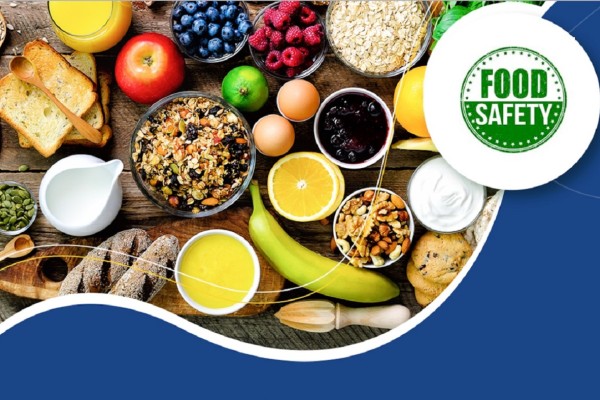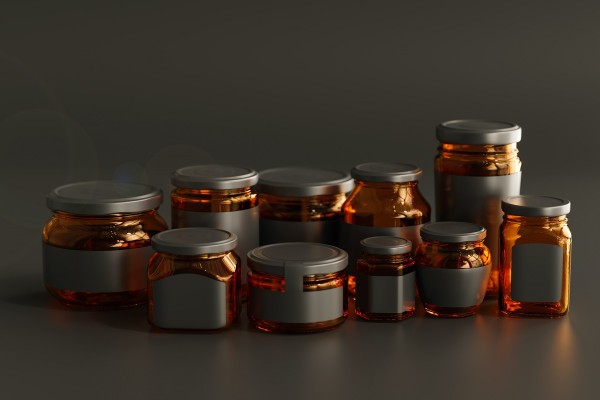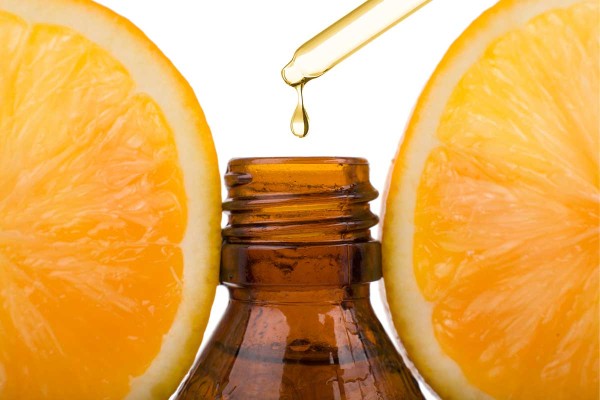"0 Sugar" on labels: What's the truth?
translated by Karen Wang
Recently, the "0-Sucrose" case of YUANQI FOREST (Vitality Forest) drew much public attention to the food and beverage products. Various reports and critics came from mainstream media, like Paper News and Huanqiu Network; also Xinhua News Agency published an article - “Playing words on 0-sucrose in product promotion, Gaining neither vitality nor forest".
Meanwhile, articles were also written by professionals on this hot issue, for example, “Differences between concept: 0 sugar, 0 calorie and 0 adding”, and “YUANQI FOREST, a capital’s favorite aroused anger of consumers”.
Furthermore, Administrations for Market Supervision also published relevant science articles, such as "Why do you still get fat after having 0 sugar food?”, “Three misunderstandings about sugar free”.
OK, let us get some professional analysis and objective opinions from the perspective of health and regulatory compliance.
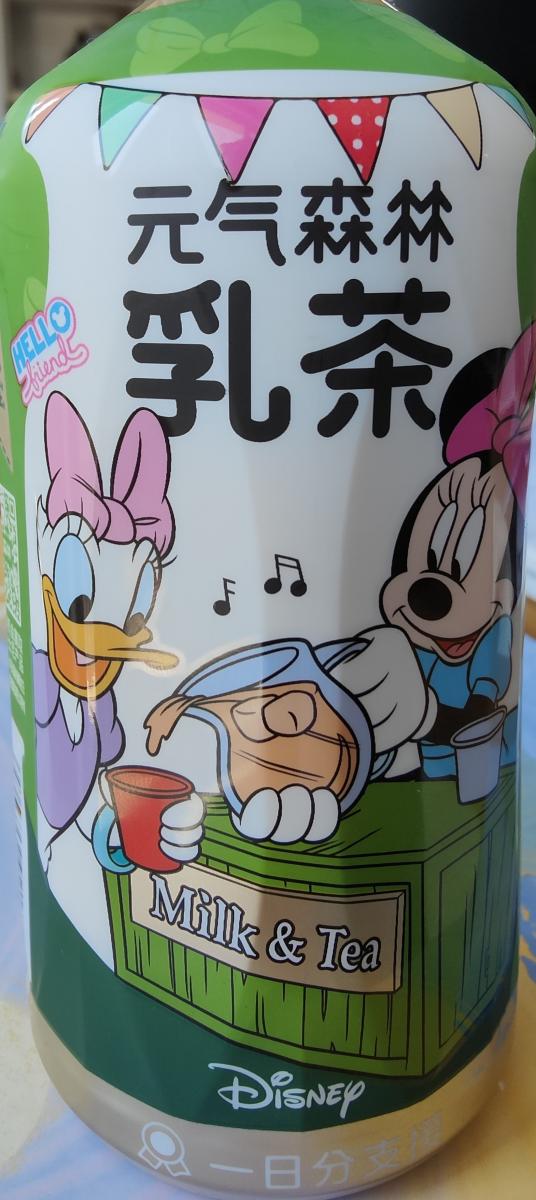
Part I - Compliance
A bottle of YUANQI FOREST Milk Tea was bought this morning. The first thing noticed is the price, that is cheaper than before (anyway the previous 10 RMB per bottle was quite expensive).
The second thing is the packaging: a cute little girl image is on the front, and lovely Disney Minnie and Donald Duck are printed on the back, while the ingredient list and nutrition table are gold fonts printed on green background and difficult to read.
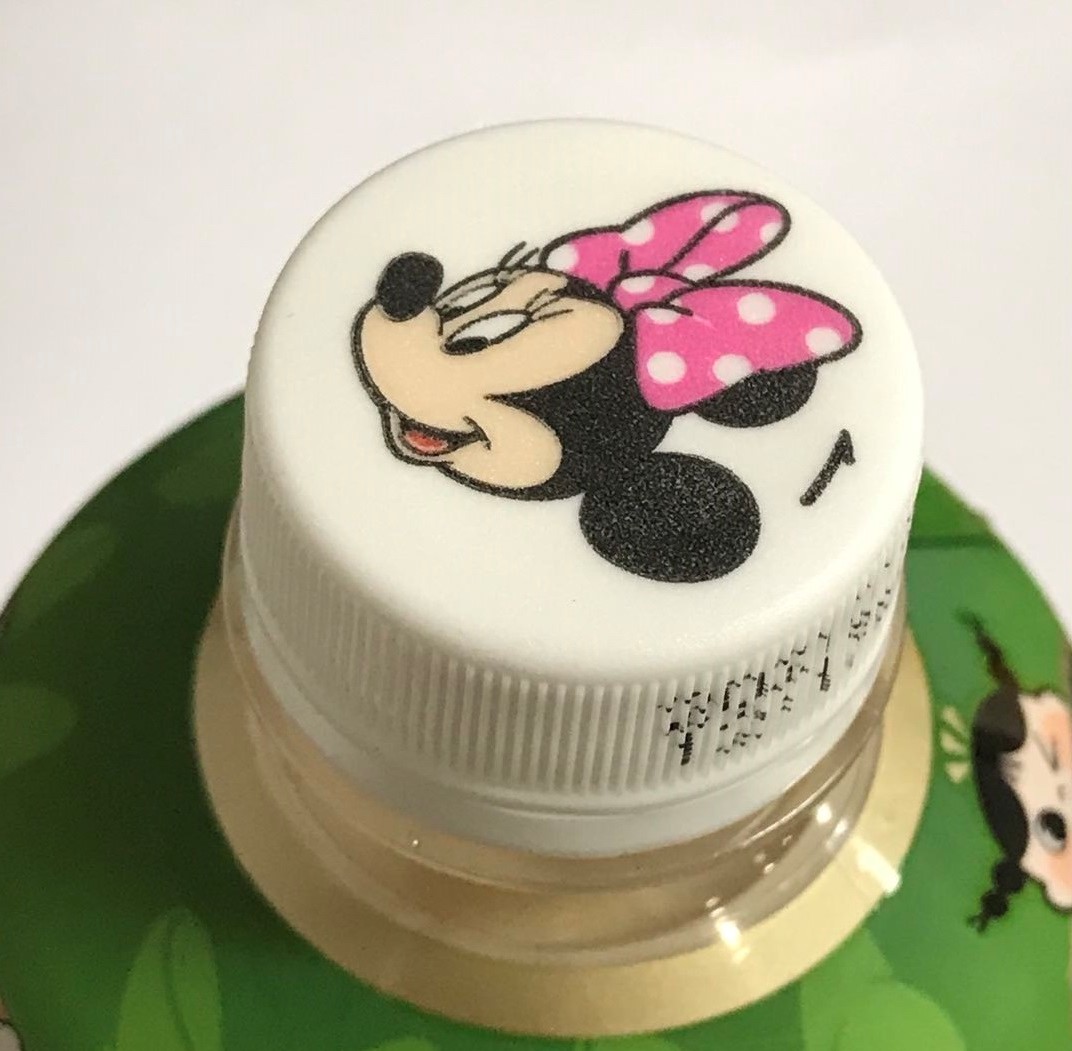
The cartoon images on front and Disney characters on back draw attention not only of children, but also parents, and the "0 Sucrose and low fat" claim also convinces consumers that it is a healthy milk tea.

After careful review on the hard-to-read ingredient list and nutrition table, consumers may finally identify the warning - "it contains caffeine, not suitable for children" on the very bottom part of the bottle, below the ingredient list.
This warning means this milk tea is not suitable for children.
Here comes the question, what is the purpose to use such retail packaging? Will cute cartoon images attract childlike adults only? Can kids resist the temptation of a drink with their favorite Disney characters on the packaging?
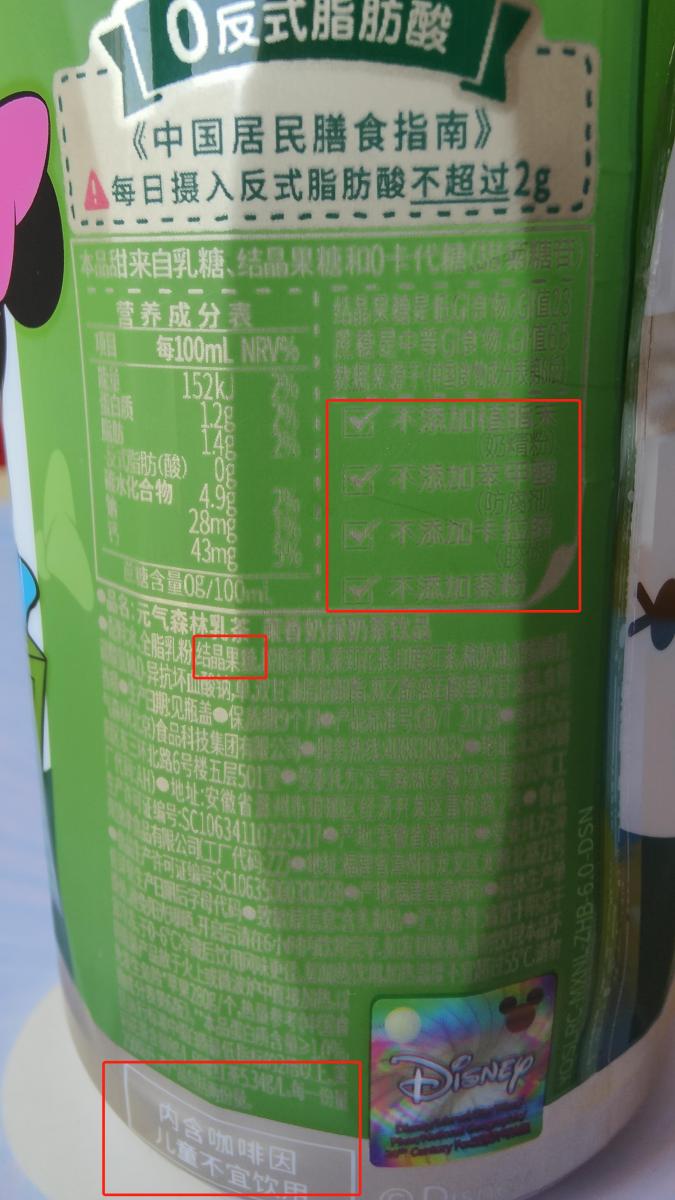
Take a look, can you find the warning?

The special claim, ingredient list and nutrition table in the photos above can be reviewed according to the governing national standard: GB 7718 National Food Safety Standard - the General Rules for the Labeling of Prepackaged Food:
General labelling:
Article 3.2 - the label should be clear, eye-catching and lasting, and it should be easy for consumers to identify and read when they purchase.
Review: Whether it meets the requirements should be determined by the law enforcement department.
Article 3.4 - the label should be true and accurate. It is not allowed to introduce food in the form of false, exaggerated, misleading or deceptive words and graphics. It is also not allowed to mislead consumers by using the size or color difference.
Article 3.5 - the label should not mislead consumers to buy the food or make the consumers to confuse by using the suggestive language, graphics and symbols directly or implicitly.
Review: no conclusion can be drawn for time being as dispute existing.
Special claim "0 sucrose and low fat" on the front:
Article 4.1 - If one or more valuable and characteristic ingredients or components are added or contained in the labelling and instructions of the food, the added quantity of such ingredients or components or the content in the finished product shall be indicated on the label.
Article 4.2 - If the food label specially emphasizes that the quantity of one or more ingredients or components is low or none, the quantity of the ingredients or components emphasized in the finished product shall be indicated.
Review: "Sucrose 0g/100ml" below the nutrition table on the back - meets the requirements.
"Fat 1.4g/100ml" lower than the stipulated low-fat claim "1.5g/100ml" – meets the requirements.
The claims - "no adding of creamer, no adding of benzoic acid, no adding of carrageenan, no adding of tea powder" on the right side of the nutrition table are all special claims, the specific quantity of all the non-adding ingredients claimed above shall be indicated in the ingredient list, even the quantity is 0.
Otherwise consumers will not know whether the final product contains such ingredients or not. However, if the non-adding ingredients listed above are added to the raw material instead of final product by the raw material supplier, shall it be deemed as non-adding? the possibility of non-compliance did exist.
Are the claims misleading consumers?
From the perspective of compliance, the content of "0 sucrose and low fat" is clear, and the specific quantity is also indicated. There is no misleading in the sense of compliance, but this kind of publicity was also used by other manufacturers. "0 sucrose " claim is more common in confectionary products, such as chocolate.
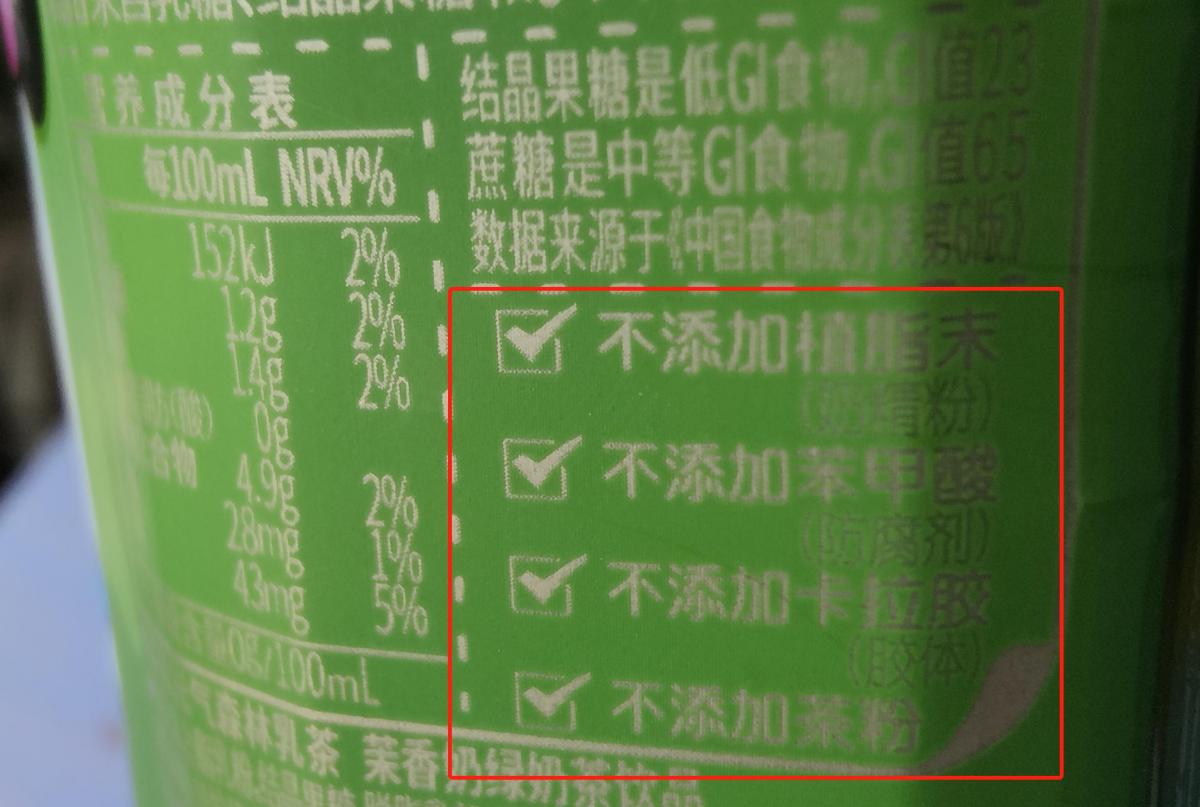
Part II Health
Many popular science articles can be used for reference. Here are some briefings about the differences between sucrose, crystalline fructose and sweeteners.
Sugars can be divided into monosaccharides, which cannot be hydrolyzed into simpler sugars, including glucose, fructose and galactose; Oligosaccharides - 2-10 moles of monosaccharide can be produced after hydrolysis of each moles of sugar; Disaccharides are the most important, and the common disaccharides include sucrose, maltose and lactose.
In China, there is a national food safety standard for sugar, namely "GB 13104-2014 Edible Sugar". This standard is applicable to raw sugar, white granulated sugar, soft white sugar, red granulated sugar, brown sugar, square sugar and rock sugar produced from raw material such as sugarcane and beet.
Sucrose is a common name, specific name should be accurately identified in the food ingredients list, such as white granulated sugar.
Crystalline fructose shall meet the national standard GB / T 26762-2011 Crystalline Fructose and Solid Fructose. Crystalline fructose is a product obtained by isomerization, separation, purification and crystallization of glucose produced by starch hydrolysis, or by separation, purification and crystallization of fructose and glucose produced by common sugar hydrolysis.
Which one is healthier, sucrose or fructose? A common understanding in the scientific circles is:
fructose is a kind of monosaccharide existing in fruits, and its sweetness is about 1.7 times that of sucrose, therefore less fructose can get the same sweetness. Moreover, fructose does not stay in the blood in the form of sugar, therefore people with diabetes can use fructose instead of other sugars.
However, it does not mean fructose is healthier than sucrose. Fructose and sucrose have the same calories. If you ingest too much fructose, fructose will metabolize into triglycerides in the liver. The fat is transported to different parts of the body through the blood, which may cause hyperlipidemia or obesity.
If the fructose intake is from natural fructose in fruits, it is undoubtedly healthier than sucrose; However, most of the fructose in the market is converted from starch, and such fructose should not be consumed in excess.
Sweeteners include artificial sweeteners and natural sweeteners. Artificial sweeteners refer to the chemical substances with sweet taste through artificial chemical modification or synthesis.
They have high sweetness and no calories. Most artificial sweeteners are hardly transformed by human body and have no nutritional value; Natural sweeteners are extracted from natural plants, usually with the name of the plant.
For example, stevioside is a natural sweetener. Natural sweeteners also include thaumatin, ammonium glycyrrhizinate and mogroside. Natural sweeteners are comparatively better.
Finally, let’s answer some questions about this “YUANQI FOREST” case:
-
Is YUANQI FOREST milk tea suitable for drinking? The answer is yes, but the sugar content should be clearly indicated in the nutrition table.
-
Is YUANQI FOREST milk tea healthy? It must be admitted that it is healthier compared with the common milk tea, but such “healthy” is not clearly defined and hard to say if it is misleading or not.
-
Is YUANQI milk tea suitable for children? It is NOT recommended for children to drink. But it is fine to buy to collect the bottles you like.
